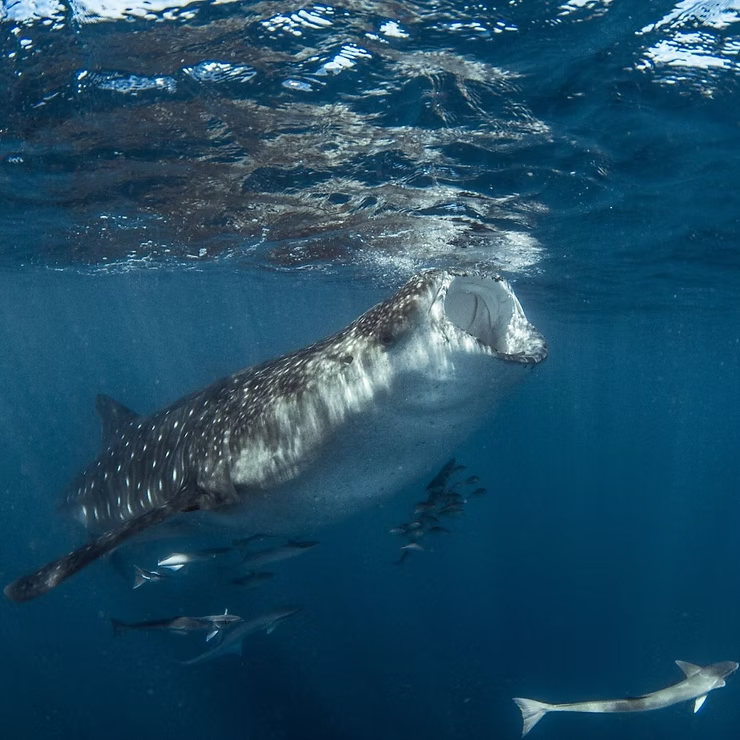Introduction
Whales, the majestic giants of the ocean, embody the mysteries and magnificence of marine life. From the smallest krill they consume to the thunderous spouts that mark their presence, whales captivate us with their size, intelligence, and cultural complexity. This article explores their biology, behaviors, habitats, and challenges while highlighting the urgent need to protect these remarkable beings.
Key Takeaways
- Blue whales can grow up to 100 feet and weigh over 200 tons.
- Bowhead whales live more than 200 years, making them the longest-lived mammals.
- Diets vary from krill and plankton to fish, squid, and even marine mammals.
- Whales communicate with complex songs and echolocation, sometimes across 1,000 miles.
- Human activity threatens whales, but conservation efforts offer hope for protection.
Gigantic Gentle Giants
Whale Dimensions
Blue whales hold the record as the largest animals ever to exist, with hearts the size of small cars. Yet whale sizes vary widely. Dwarf sperm whales measure just 9 feet, while humpbacks use flippers nearly one-third of their body length to perform acrobatic leaps. These physical adaptations showcase the evolutionary diversity of whales across species.
Mass and Weight
Blue whales tip the scales at up to 200 tons, rivaling 33 elephants. Even newborn calves are extraordinary, weighing as much as two adult elephants at birth. Sperm whales boast the heaviest brains, up to 18 pounds, while humpbacks reach about 40 tons, proving that size is essential to survival in marine ecosystems.
Whales Through the Ages
Lifespan and Longevity
Bowhead whales can live beyond 200 years, surviving through centuries of shifting seas. Humpback and killer whales live for decades, with some reaching 80 or 90 years. These long lifespans reflect resilience and adaptability, offering scientists unique insights into ocean history and conservation needs.
Growth Stages
- Birth: Calves are born tail-first and swim almost immediately.
- Nursing: They drink rich milk, gaining up to 200 pounds per day.
- Weaning: Calves gradually transition to solid foods.
- Maturity: Full size is reached after a decade, with some species growing to 100 feet.
The Whale’s Pantry
Diets and Feeding Techniques
Baleen whales filter krill and plankton using baleen plates, while toothed whales hunt fish, squid, and other mammals. Specialized feeding behaviors include humpbacks’ bubble netting, right whales’ skim feeding, and grey whales’ bottom feeding. These diverse strategies reveal the adaptability of whales to their ocean environments.
Migration and Feeding Cycles
Whales feast in cold, nutrient-rich waters during summer and migrate to warmer seas for breeding in winter. Many species fast for months, relying on thick blubber reserves. This cycle of feasting and fasting ensures survival across vast migrations spanning thousands of miles.
Communication and Intelligence
Vocalizations
Whales produce haunting songs, sharp clicks, and playful whistles. Humpback songs can last hours, sperm whales communicate through distinctive codas, and belugas are known as “sea canaries” for their varied sounds. These calls convey identity, emotions, and navigation signals.
Echolocation
Species like sperm whales and narwhals use echolocation to map their surroundings and hunt in deep, dark waters. This biological sonar is essential for survival where vision fails.
Social Learning
Whales pass knowledge across generations, teaching calves migration routes, hunting strategies, and vocal dialects. This cultural transmission highlights their intelligence and deep social bonds.
Conservation Challenges
Threats to Survival
- Climate change alters food availability and habitats.
- Noise pollution disrupts communication and migration.
- Entanglement in fishing gear causes injury and death.
- Plastic waste leads to ingestion and suffocation.
Conservation Efforts
International bans on whaling, marine protected areas, and nonprofit initiatives have made strides in whale conservation. Individuals can help by reducing plastic use, supporting conservation groups, joining cleanups, and spreading awareness.
Conclusion
Whales inspire awe through their size, intelligence, and resilience, yet their future depends on collective action. Protecting these giants ensures not only their survival but also the health of the ocean itself. Every whale song, migration, and breach is a reminder of our shared responsibility to safeguard life beneath the waves.
Frequently Asked Questions
How large can whales get?
Blue whales can reach 100 feet in length and weigh up to 200 tons.
How long do whales live?
Bowhead whales may live over 200 years, while others live 80 to 90 years.
What do whales eat?
Baleen whales consume krill and plankton, while toothed whales hunt fish, squid, and other marine mammals.
How do whales communicate?
They use songs, clicks, whistles, and echolocation, with some species communicating across 1,000 miles.
What challenges do whales face?
Whales face threats from climate change, pollution, entanglement, and habitat destruction.
How can people help protect whales?
Support conservation groups, reduce plastic use, join cleanups, and advocate for marine protection policies.

